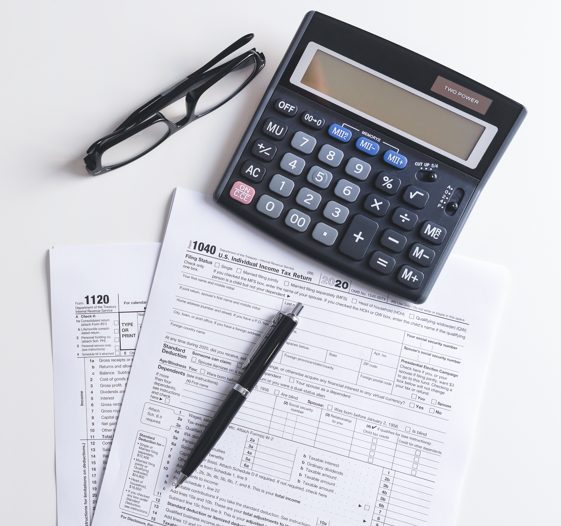It’s 2021 and Australia’s gender pay gap is stuck at around 15 per cent; despite laws promoting better gender equality and evolving attitudes, women are still often paid less than men.
The super gap is even greater than the pay gap. According to Industry Super Australia, on average, women retire with around half as much super as men.
In light of the theme for this year’s International Women’s Day (8 March 2021) being ‘Choose to Challenge’, it is timely to examine the super gap and challenge the factors that contribute to this inequity.

Why Do Women Accumulate Less Super?
Structural and cultural biases and workplace barriers, in addition to the interrelated family, work and social factors, impact women’s ability to earn and accrue super for retirement. Some key factors include:
- Women earn less than men
This a significant contributor to the gender super gap. On average, men take home $25,679 a year more than women. There are many contributing factors, including the gender pay gap. This impact compounds over a lifetime.
- Unpaid work
Men are far less likely to take time out of the workforce for unpaid caring responsibilities. 95 per cent of primary carer’s leave is taken by mothers; conversely, one in twenty fathers takes such leave.
Parenthood aside, women spend 64 per cent of their average working hours each week on unpaid work compared to 36 per cent for men.
- Part-time roles
Women are more likely than men to work part-time or casually. Three in four part-time employees are female. - Return to workforce barriers
Women often face barriers to returning to work after taking a time out as carers. Whether due to limited opportunities or necessity, they may accept employment in roles below their skill level to balance caring and earning responsibilities.
Although compulsory superannuation has provided women with greater access to retirement savings, the current framework doesn’t address some particular challenges women face in the workplace. Some prominent examples are:
- The $450 monthly earning threshold
An employer is not required to pay super to an employee who earns less than $450 a month, is under 18, or domestic service employees working 30 hours or less per week.Women make up the majority of the part-time and casual workforce; many also have multiple jobs, meaning they miss out on super payments from more than one employer.
- No Superannuation on paid parental leave
Unlike other leave types, the government paid parental leave scheme does not attract the superannuation guarantee. Many women miss out on crucial years of superannuation accumulation while supporting family.
Past Exclusion From Superannuation Is Still Impacting the Retirement Savings of Women
Historically, super was largely available to public servants or senior management, but not everyone.
In 1974, less than 15 per cent of working women had super. In 1985, 24 per cent of working women had super.
It wasn’t until 1992, that compulsory super for everyone was introduced.
Over the years, there have been both direct and indirect discrimination against women in relation to retirement savings, exposing women, especially older generations, to reduced financial security.
While legislation making super compulsory for all was a great step forward, it is not until the Gen X (born 1965-1980) and Millennial generations (born 1981-1996) retire, that women will have been paid super for their entire career.
Compounding Inequality
Compound interest makes super a powerful tool when saving up for life in retirement as interest is paid on both the principal and interest from past years: a bit like the snowball effect – over time you see exponential growth.
Using MoneySmart’s compound interest calculator, as an example:
- If you were to deposit $20,000 back in 1985 (36 years ago – when super became available under Government awards) with compounding interest, this deposit would be worth $115,836 today.
- If you were to deposit $20,000 in 1992 (when super became compulsory for all), the $20,000 would be worth $82,323.
- For the same principal amount of $20,000, an additional seven years of investment leads to a 40 per cent difference.
Together with the favourable tax treatment afforded to super, compounding interest is one of the main reasons investing through your super for retirement is so powerful, and one of the many reasons why the super gap is so much bigger than the wage gap.
Contributing Sooner Rather Than Later
Compounding interest means the longer your money is invested – the more interest you make. Boosting your super, or your spouse’s super, is a way to help close the super gap.
For information about salary sacrifice, voluntary contributions, spouse contributions, and contribution splitting, visit the legalsuper website.
Other Levers to Pull
Working towards financial security for you and your family isn’t just about putting away money. There are other levers you can pull to optimise your super.
Understanding fees, account consolidation, making an investment choice, sorting your insurances and managing your beneficiaries, are some options.
Financial Literacy
legalsuper is focused on empowering our members through education, enabling both women and men to better leverage super and have confidence in financial security.
To make the most of contributions, and optimise your super account, legalsuper is here to help. We have a national client service team able to meet with you 1-to-1 and offer tailored support.
Our Role
legalsuper has a significant role to play in closing the super gap. Historically, legislation and policymaking has had the biggest impacts on women’s financial security in retirement.
legalsuper works closely with organisations who help us influence better outcomes for women.
legalsuper is a member of Women In Super, a not-for-profit organisation. Through Women In Super, we advocate for a super system void of gender-based inequality, and this includes advocacy for topics such as:
- removal of the $450 monthly earnings threshold;
- superannuation and paid parental leave;
- workplace gender equality; and
- women on superannuation fund boards.
We also work with the Australian Council of Superannuation Investors (ACSI), which provides a collective voice and influence on Environmental, Social, and Governance (ESG) issues, including promoting gender diversity on the boards of ASX listed companies.
In addition, we have our own internal diversity policy to help us combat bias against women.
Challenging the Super Gap
legalsuper is here to empower all members to make choices leading to better outcomes in retirement. For women, we are working to close the super gap and increase the long-term financial security of our members, so that generations of women which follow us can achieve the same.
We’re Here to Help
If you’d like to meet with us to discuss your super, our team is available for 1-to-1 consultations, offering tailored information and support. Contact us via mail@legalsuper.com.au or on 1800 060 312, 8am-8pm (AEST), Monday to Friday to book an appointment.


